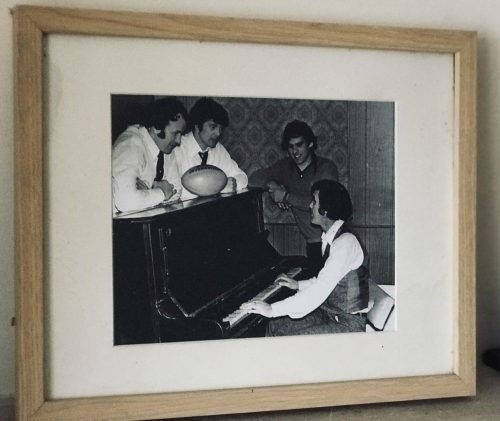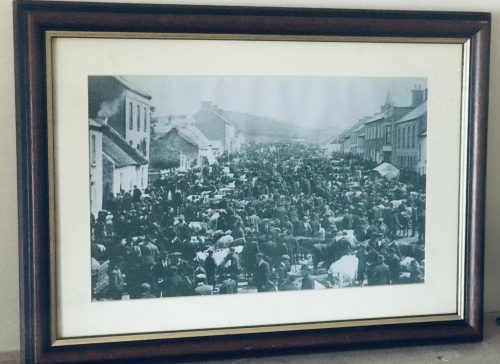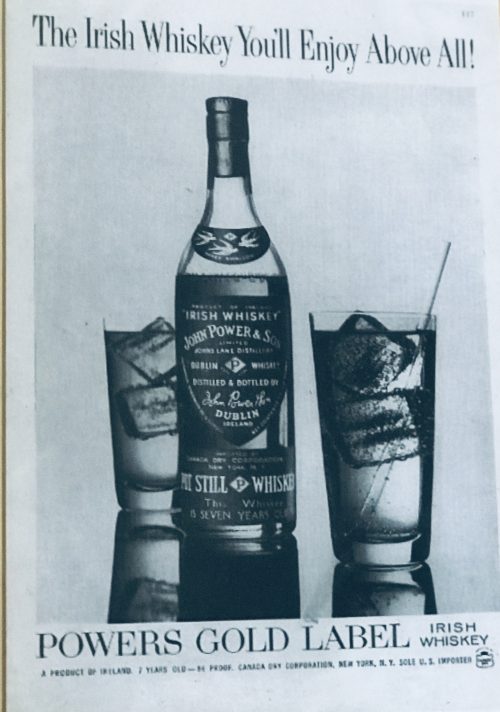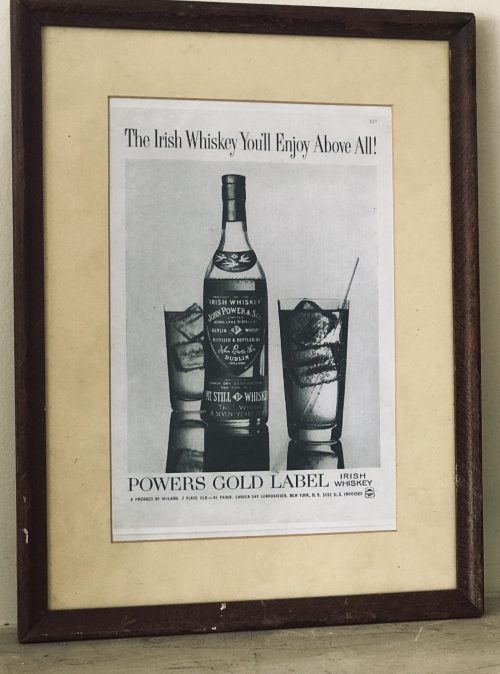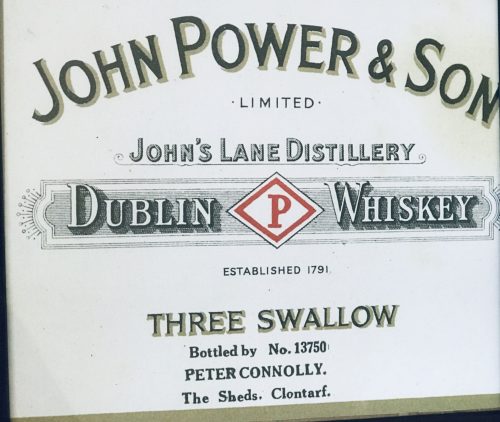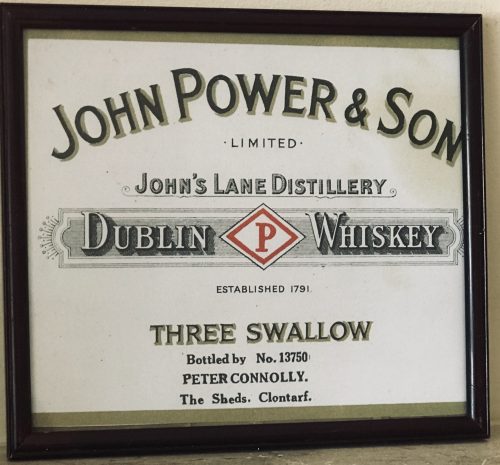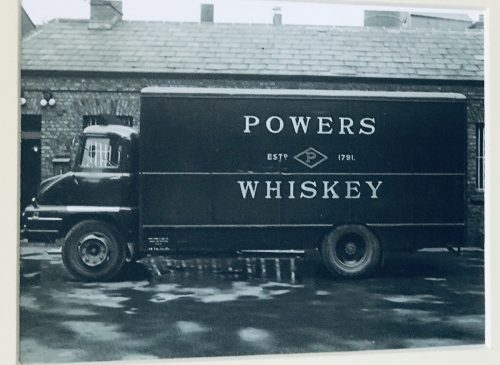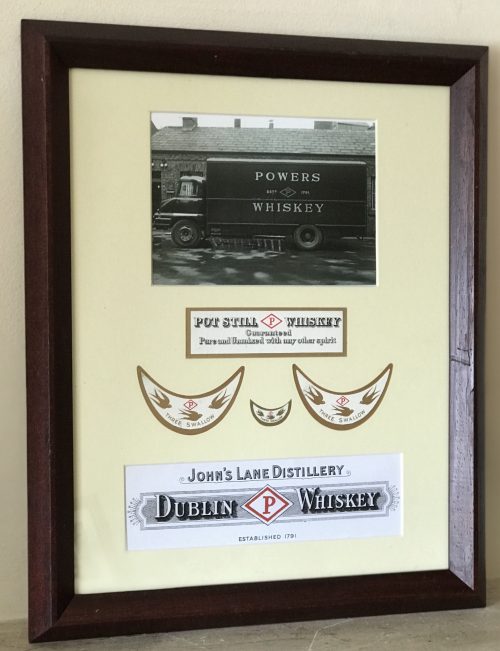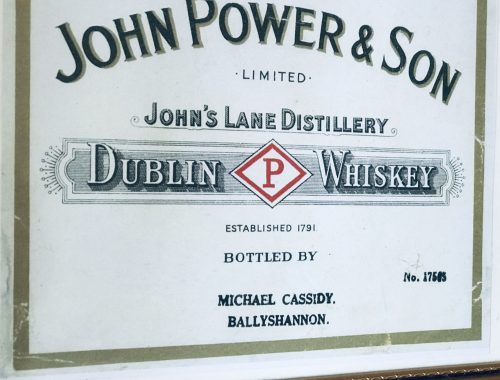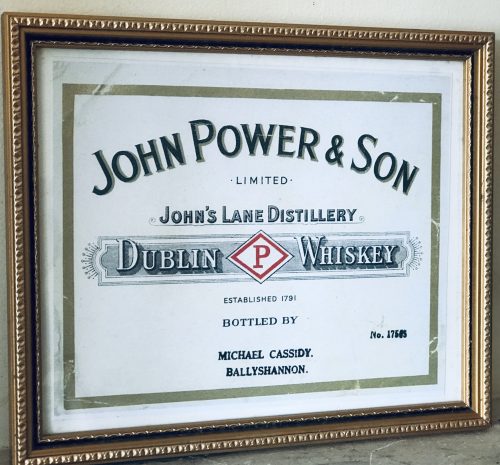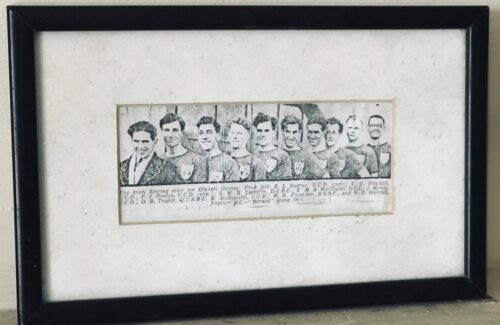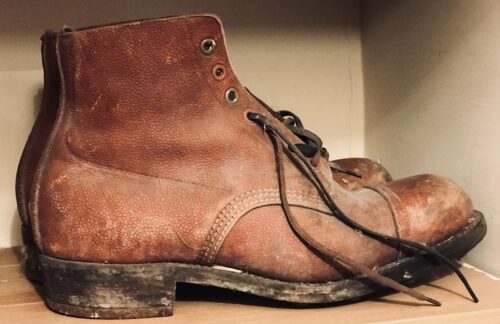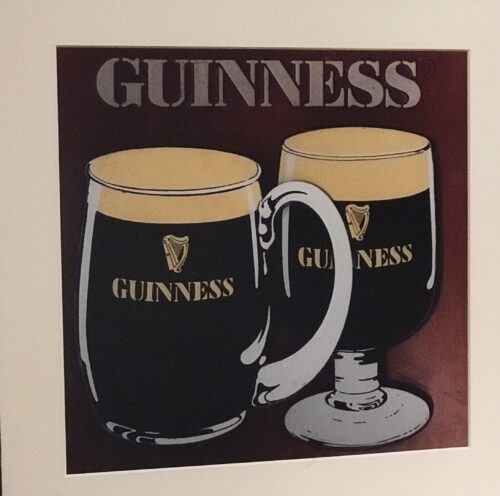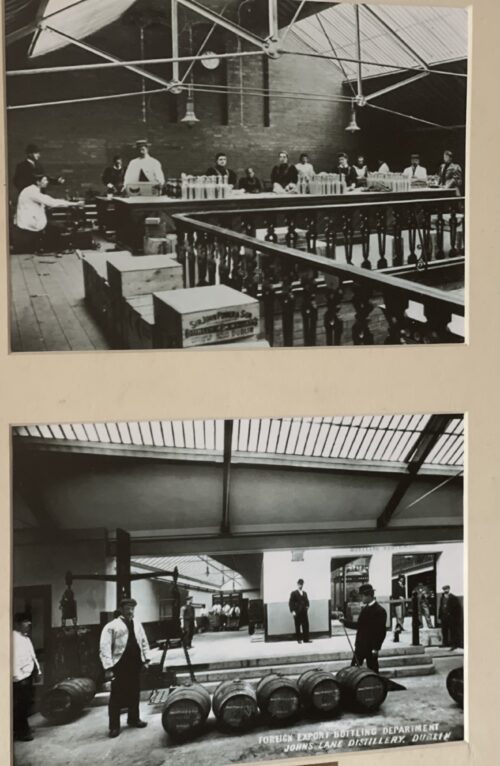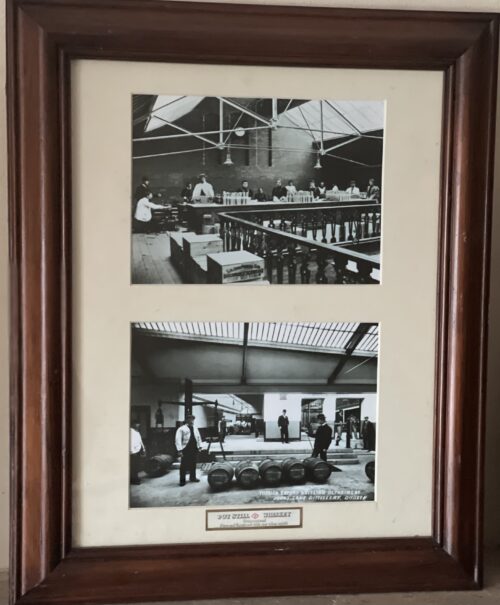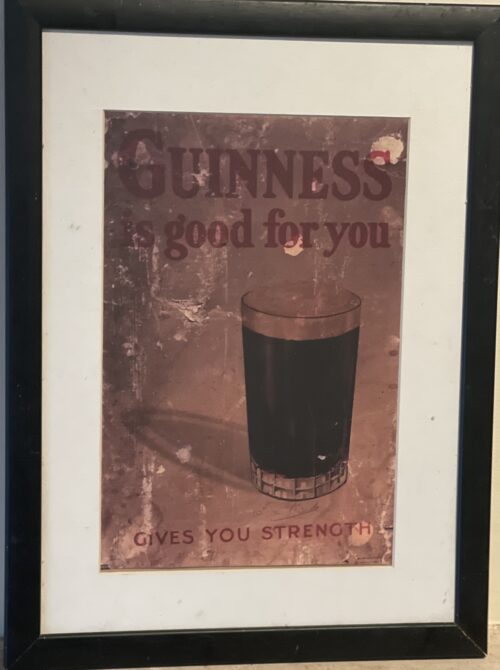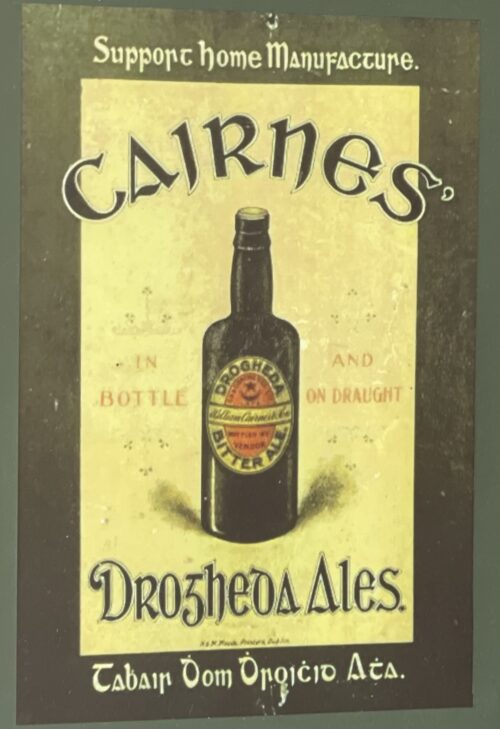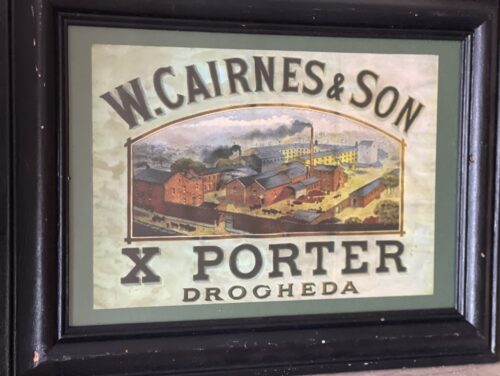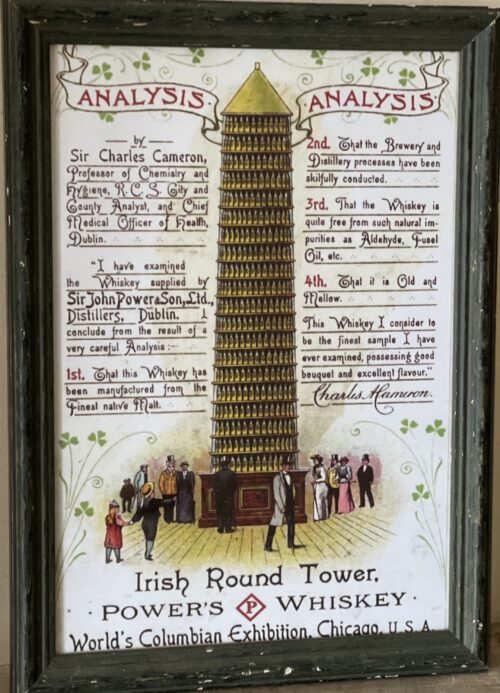Superb historical,anti conscription poster from 1918 publicising an event at the sports filed in Ballaghaderreen on Sunday June 23rd 1918 with Countess Plunkett amongst others in attendance .
Ballaghaderreen Co Roscommon 48cm x 38cm
The
Conscription Crisis of 1918 stemmed from a move by the
British government to impose
conscription (military draft) in
Ireland in April 1918 during the
First World War. Vigorous opposition was led by trade unions,
Irish nationalist parties and Roman Catholic bishops and priests. A conscription law was passed but was never put in effect; no one in Ireland was drafted into the
British Army. The proposal and backlash galvanised support for political parties which advocated Irish separatism and influenced events in the lead-up to the
Irish War of Independence.
Background
In early 1918, the
British Army was dangerously short of troops for the
Western Front. In the
German Spring Offensive of 1918,
German troops broke through the
Alliedlines in several sectors of the front in
France, with a local advantage in numbers of four to one, putting severe strain on the Allied armies.
The British Army, in one day, suffered a major setback, with the
Imperial German Army over-running 98 square miles (250 km
2) of territory and penetrating, at the furthest point, to a depth of four and a half miles (7 km).
Conscription in Great Britain had already been established by the
Military Service Act of January 1916, which came into effect a few weeks later in March 1916. By 1918
David Lloyd George was Prime Minister, leading a coalition government, and in addressing a very grave military situation it was decided to use a new 'Military Service Bill' to extend
conscription to
Ireland and also to older men and further groups of workers in Britain, thus reaching untapped reserves of manpower.
Although large numbers of Irishmen had willingly joined
Irish regiments and
divisions of the
New Army at the outbreak of war in 1914,
the likelihood of enforced conscription created a backlash. This reaction was based particularly on the fact that, in a "dual policy", Lloyd George controversially linked implementation of the
Government of Ireland Act 1914 or
a new Home Rule Bill (as previously recommended in March by the
Irish Convention) with enactment of the Military Service Bill. This had the effect of alienating both
nationalists and
unionists in Ireland.
The linking of conscription and Home Rule outraged the Irish nationalist parties at Westminster, including the IPP,
All-for-Ireland League and others, who walked out in protest and returned to Ireland to organise opposition.
Despite opposition from the entire
Irish Parliamentary Party (IPP), conscription for Ireland was voted through at
Westminster, becoming part of the 'Military Service (No. 2) Act, 1918'
Although the crisis was unique to Ireland at the time, it followed similar campaigns in
Australia (1916–17) and
Canada (1917). In Australia,
Irish Catholics mostly opposed conscription; in Canada (and the US), Irish Catholics supported conscription.
The threat of conscription resulted in a plan, proposed by
Cathal Brugha, to assassinate British cabinet members in April 1918, before they could vote on conscription (or as reprisal for having done so).
Though the plan was never carried through, the stress of the plan reputedly had a significant impact on the republicans involved.
Conferences and pledge
The nine Anti-Conscription Committee members
On 18 April 1918, acting on a resolution of
Dublin Corporation, the
Lord Mayor of Dublin (
Laurence O'Neill) held a conference at the
Mansion House, Dublin. The
Irish Anti-Conscription Committee was convened to devise plans to resist conscription, and represented different sections of nationalist opinion:
John Dillon and
Joseph Devlin for the Irish Parliamentary Party,
Éamon de Valera and
Arthur Griffith for
Sinn Féin,
William O'Brien and
Timothy Michael Healy for the All-for-Ireland Party and
Michael Egan,
Thomas Johnson and
William O'Brien representing
Labour and the
trade unions.
On the evening of the same day, the
Roman Catholic bishops were holding their annual meeting and declared the conscription decree an oppressive and unjust law, calling on the Church's adherents to resist "by the most effective means at our disposal" (if "consonant with the law of God.")
The Anti-Conscription Committee and bishops proposed an anti-conscription pledge that was to be taken at the church door of every Roman Catholic parish the next Sunday, 21 April, which read:
Denying the right of the British government to enforce compulsory service in this country, we pledge ourselves solemnly to one another to resist conscription by the most effective means at our disposal.
Strikes and other actions in Ireland
Following their representation at the Mansion House, the labour movement made its own immediate and distinctive contribution to the anti-conscription campaign. A one-day
general strike was called in protest, and on 23 April 1918, work was stopped in railways, docks, factories, mills, theatres, cinemas, trams, public services, shipyards, newspapers, shops, and even Government
munitions factories. The strike was described as "complete and entire, an unprecedented event outside the continental countries".
In the following weeks, anti-conscription
rallies were held nationwide, with 15,000 people attending a meeting in
County Roscommon at the start of May, where John Dillon, leader of the Irish Parliamentary Party and Éamon de Valera of Sinn Féin shared the platform. This in itself is notable as, while sharing nationalist views, Dillon and de Valera's parties had previously been divided in opinion as to the means of gaining legislative or complete independence from the United Kingdom.
On 11 June Dublin's Lord Mayor, Laurence O'Neill, in a letter to the President of the United States
Woodrow Wilson called for support against conscription:
In the fourth year of a war ostensibly begun for the defence of small nations, a law conscribing the manhood of Ireland has been passed, in defiance of the wishes of our people .... To warrant the coercive statute, no recourse was had to the electorate of Britain, much less to that in Ireland. Yet the measure was forced through within a week, despite the votes of Irish representatives and under a system of closure never applied to the debates, which established conscription for Great Britain on a milder basis.
Over a year earlier Wilson had introduced the
Selective Service Act of 1917; by June 1917 it enabled the registration of all American men aged between 21 and 31 for conscription.
"German plot"

Dillon on platform during Roscommon anti-conscription rally in 1918
Nervous of growing unrest and still with dire need to progress conscription in Ireland, Lloyd George's government undertook several initiatives to quell the backlash.
As Sinn Féin was publicly perceived to be the key instigator of anti-government and anti-conscription feeling,
Lord Lieutenant of Ireland Lord French, claiming evidence of a treasonable plot between Sinn Féin and the
Germans, ordered the arrest of 73 Sinn Féin leaders, including Griffith and de Valera, on 17 May.
The heavy-handed response by the
Dublin Castle authorities did little to defuse the situation. In fact, because of the lack of evidence, the German Plot was little believed in Great Britain, Ireland or the United States, but aggravated opinion and increased support for Sinn Féin.
Hay Plan
Simultaneously, a more subtle effort (and assessed by later historians as having more potential for success)
was undertaken from the offices of
Lord Northcliffe under the
Minister of Information. The "Hay Plan" was conceived by Stuart Hay—a British Army Captain, who was under orders to establish a proposal to work around widespread anti-conscription feeling and to persuade Irish nationalists to join the French army (initially as labourers in specialised
battalions). Hay's plan relied on the power of the
Roman Catholic Church in Ireland (and empathy among its supporters for fellow Catholics in Belgium and France suffering from German invasion), to sway opinion:
If the church were definitely or even in a large measure converted and the support it has given to disloyal elements be not taken away but thrown on to the other side in the controversy [the conscription crisis], much would be done for the future of the peace in Ireland.
— Stuart Hay
The plan simply called for a letter (drafted by Hay and approved by
Edward Shortt and then
Chief Secretary for Ireland) to be sent by the French
Primate to the Irish bishops, requesting that they soften their opposition to conscription to aid the war effort in France.
Despite some progress in August in persuading
Primate of All Ireland Cardinal Logue, the "Hay Plan" was delayed and ultimately stymied by complications in diplomatic channels and by political rivalries.
The latter included concerns by some in the British Parliament that reciprocal French support of Irish interests would not be to Britain's advantage after the war.
In France, the German Spring Offensive and its following attacks had failed by July, and the Allies counterattacked successfully at the
Second Battle of the Marne and the
Hundred Days Offensive. Recruitment efforts through September and October continued to have very limited success, and by the time of the November
Armistice, marking the end of World War I, conscription had still not been implemented in Ireland.
After-effects
By June 1918 it had become apparent to most observers in Britain and Ireland that following
American entry into the war the tide of war had changed in favour of the Allied armies in Europe, and by 20 June the Government had dropped its conscription and home rule plans, given the lack of agreement of the Irish Convention. However the legacy of the crisis remained.
Completely ineffectual as a means to bolster battalions in France, the events surrounding the Conscription Crisis were disastrous for the Dublin Castle authorities, and for the more moderate nationalist parties in Ireland. The delay in finding a resolution to the home rule issue, partly caused by the war, and exaggerated by the Conscription Crisis in Ireland, all increased support for Sinn Féin.
Sinn Féin's association (in the public perception at least) with the 1916
Easter Rising and the anti-conscription movement, directly and indirectly led on to their landslide victory over (and effective elimination of) the Irish Parliamentary Party, the formation of the
first Dáil Éireann and in turn to the outbreak of the
Anglo-Irish War in 1919.
This opposition also led in part to Sinn Féin being ignored by the subsequent victors at the
Paris Peace Conference in 1919, despite its electoral success. It appointed representatives who moved to Paris and several times requested a place at the conference, with recognition of the
Irish Republic, but never received a reply.
The crisis was also a watershed in Ulster Unionism's relations with Nationalist Ireland, as expressed by Unionist leader
James Craig: "for Ulster Unionists the conscription crisis was the final confirmation that the aspirations of Nationalists and Unionists were irreconcilable.
Voluntary enlistment
The bulk of opposition to the Great War in Ireland was to compulsory conscription, not to the war nor to voluntary enlistment in the British Army. In fact, many Irish supported the war and Irish involvement.
Support and enlistment were more prominent amongst
Irish Unionist and
Protestant traditions, but nationalist and Roman Catholic enlistment was also common,
as the war was seen to be fought in defence of smaller Catholic countries like occupied Belgium. In this cause, those who would later become detractors of conscription (including John Dillon, William O'Brien and the Roman Catholic bishops) were prominent on recruitment platforms at the outbreak of the war.
In all, 200,000 to 300,000
Irishmen served with British forces during the Great War, and, of the 680,000 fatalities from the
United Kingdom of Great Britain and Ireland, some 40,000 to 49,000
were from Ireland. In all about 12.3 per cent of Irish men of service age actually served, approximately 25 per cent of the rate in the rest of the UK; 57 per cent of them were Roman Catholics.

 Many years on, Stuart Wilson vividly recalled the Dennison tackles and spoke about them in remarkable detail and with commendable honesty: “The move involved me coming in from the blind side wing and it had been working very well on tour. It was a workable move and it was paying off so we just kept rolling it out. Against Munster, the gap opened up brilliantly as it was supposed to except that there was this little guy called Seamus Dennison sitting there in front of me.
“He just basically smacked the living daylights out of me. I dusted myself off and thought, I don’t want to have to do that again. Ten minutes later, we called the same move again thinking we’d change it slightly but, no, it didn’t work and I got hammered again.”
The game was 11 minutes old when the most famous try in the history of Munster rugby was scored.
Tom Kiernan recalled: “It came from a great piece of anticipation by Bowen who in the first place had to run around his man to get to Ward’s kick ahead. He then beat two men and when finally tackled, managed to keep his balance and deliver the ball to Cantillon who went on to score. All of this was evidence of sharpness on Bowen’s part.”
Very soon it would be 9-0. In the first five minutes, a towering garryowen by skipper Canniffe had exposed the vulnerability of the New Zealand rearguard under the high ball. They were to be examined once or twice more but it was from a long range but badly struck penalty attempt by Ward that full-back Brian McKechnie knocked on some 15 yards from his line and close to where Cantillon had touched down a few minutes earlier. You could sense White, Whelan, McLoughlin and co in the front five of the Munster scrum smacking their lips as they settled for the scrum. A quick, straight put-in by Canniffe, a well controlled heel, a smart pass by the scrum-half to Ward and the inevitability of a drop goal. And that’s exactly what happened.
The All Blacks enjoyed the majority of forward possession but the harder they tried, the more they fell into the trap set by the wily Kiernan and so brilliantly carried out by every member of the Munster team.
The tourists might have edged the line-out contest through Andy Haden and Frank Oliver but scrum-half Mark Donaldson endured a miserable afternoon as the Munster forwards poured through and buried him in the Thomond Park turf.
As the minutes passed and the All Blacks became more and more unsure as to what to try next, the Thomond Park hordes chanted “Munster-Munster–Munster” to an ever increasing crescendo until with 12 minutes to go, the noise levels reached deafening proportions.
And then ... a deep, probing kick by Ward put Wilson under further pressure. Eventually, he stumbled over the ball as it crossed the line and nervously conceded a five-metre scrum. The Munster heel was disrupted but the ruck was won, Tucker gained possession and slipped a lovely little pass to Ward whose gifted feet and speed of thought enabled him in a twinkle to drop a goal although surrounded by a swarm of black jerseys. So the game entered its final 10 minutes with the All Blacks needing three scores to win and, of course, that was never going to happen.
Munster knew this, so, too, did the All Blacks. Stu Wilson admitted as much as he explained his part in Wardy’s second drop goal: “Tony Ward banged it down, it bounced a little bit, jigged here, jigged there, and I stumbled, fell over, and all of a sudden the heat was on me. They were good chasers. A kick is a kick — but if you have lots of good chasers on it, they make bad kicks look good. I looked up and realised — I’m not going to run out of here so I just dotted it down. I wasn’t going to run that ball back out at them because five of those mad guys were coming down the track at me and I’m thinking, I’m being hit by these guys all day and I’m looking after my body, thank you. Of course it was a five-yard scrum and Ward banged over another drop goal. That was it, there was the game”.
The final whistle duly sounded with Munster 12 points ahead but the heroes of the hour still had to get off the field and reach the safety of the dressing room. Bodies were embraced, faces were kissed, backs were pummelled, you name it, the gauntlet had to be walked. Even the All Blacks seemed impressed with the sense of joy being released all about them. Andy Haden recalled “the sea of red supporters all over the pitch after the game, you could hardly get off for the wave of celebration that was going on. The whole of Thomond Park glowed in the warmth that someone had put one over on the Blacks.”
Controversially, the All Blacks coach, Jack Gleeson (usually a man capable of accepting the good with the bad and who passed away of cancer within 12 months of the tour), in an unguarded (although possibly misunderstood) moment on the following day, let slip his innermost thoughts on the game.
“We were up against a team of kamikaze tacklers,” he lamented. “We set out on this tour to play 15-man rugby but if teams were to adopt the Munster approach and do all they could to stop the All Blacks from playing an attacking game, then the tour and the game would suffer.”
It was interpreted by the majority of observers as a rare piece of sour grapes from a group who had accepted the defeat in good spirit and it certainly did nothing to diminish Munster respect for the All Blacks and their proud rugby tradition.
Many years on, Stuart Wilson vividly recalled the Dennison tackles and spoke about them in remarkable detail and with commendable honesty: “The move involved me coming in from the blind side wing and it had been working very well on tour. It was a workable move and it was paying off so we just kept rolling it out. Against Munster, the gap opened up brilliantly as it was supposed to except that there was this little guy called Seamus Dennison sitting there in front of me.
“He just basically smacked the living daylights out of me. I dusted myself off and thought, I don’t want to have to do that again. Ten minutes later, we called the same move again thinking we’d change it slightly but, no, it didn’t work and I got hammered again.”
The game was 11 minutes old when the most famous try in the history of Munster rugby was scored.
Tom Kiernan recalled: “It came from a great piece of anticipation by Bowen who in the first place had to run around his man to get to Ward’s kick ahead. He then beat two men and when finally tackled, managed to keep his balance and deliver the ball to Cantillon who went on to score. All of this was evidence of sharpness on Bowen’s part.”
Very soon it would be 9-0. In the first five minutes, a towering garryowen by skipper Canniffe had exposed the vulnerability of the New Zealand rearguard under the high ball. They were to be examined once or twice more but it was from a long range but badly struck penalty attempt by Ward that full-back Brian McKechnie knocked on some 15 yards from his line and close to where Cantillon had touched down a few minutes earlier. You could sense White, Whelan, McLoughlin and co in the front five of the Munster scrum smacking their lips as they settled for the scrum. A quick, straight put-in by Canniffe, a well controlled heel, a smart pass by the scrum-half to Ward and the inevitability of a drop goal. And that’s exactly what happened.
The All Blacks enjoyed the majority of forward possession but the harder they tried, the more they fell into the trap set by the wily Kiernan and so brilliantly carried out by every member of the Munster team.
The tourists might have edged the line-out contest through Andy Haden and Frank Oliver but scrum-half Mark Donaldson endured a miserable afternoon as the Munster forwards poured through and buried him in the Thomond Park turf.
As the minutes passed and the All Blacks became more and more unsure as to what to try next, the Thomond Park hordes chanted “Munster-Munster–Munster” to an ever increasing crescendo until with 12 minutes to go, the noise levels reached deafening proportions.
And then ... a deep, probing kick by Ward put Wilson under further pressure. Eventually, he stumbled over the ball as it crossed the line and nervously conceded a five-metre scrum. The Munster heel was disrupted but the ruck was won, Tucker gained possession and slipped a lovely little pass to Ward whose gifted feet and speed of thought enabled him in a twinkle to drop a goal although surrounded by a swarm of black jerseys. So the game entered its final 10 minutes with the All Blacks needing three scores to win and, of course, that was never going to happen.
Munster knew this, so, too, did the All Blacks. Stu Wilson admitted as much as he explained his part in Wardy’s second drop goal: “Tony Ward banged it down, it bounced a little bit, jigged here, jigged there, and I stumbled, fell over, and all of a sudden the heat was on me. They were good chasers. A kick is a kick — but if you have lots of good chasers on it, they make bad kicks look good. I looked up and realised — I’m not going to run out of here so I just dotted it down. I wasn’t going to run that ball back out at them because five of those mad guys were coming down the track at me and I’m thinking, I’m being hit by these guys all day and I’m looking after my body, thank you. Of course it was a five-yard scrum and Ward banged over another drop goal. That was it, there was the game”.
The final whistle duly sounded with Munster 12 points ahead but the heroes of the hour still had to get off the field and reach the safety of the dressing room. Bodies were embraced, faces were kissed, backs were pummelled, you name it, the gauntlet had to be walked. Even the All Blacks seemed impressed with the sense of joy being released all about them. Andy Haden recalled “the sea of red supporters all over the pitch after the game, you could hardly get off for the wave of celebration that was going on. The whole of Thomond Park glowed in the warmth that someone had put one over on the Blacks.”
Controversially, the All Blacks coach, Jack Gleeson (usually a man capable of accepting the good with the bad and who passed away of cancer within 12 months of the tour), in an unguarded (although possibly misunderstood) moment on the following day, let slip his innermost thoughts on the game.
“We were up against a team of kamikaze tacklers,” he lamented. “We set out on this tour to play 15-man rugby but if teams were to adopt the Munster approach and do all they could to stop the All Blacks from playing an attacking game, then the tour and the game would suffer.”
It was interpreted by the majority of observers as a rare piece of sour grapes from a group who had accepted the defeat in good spirit and it certainly did nothing to diminish Munster respect for the All Blacks and their proud rugby tradition.

